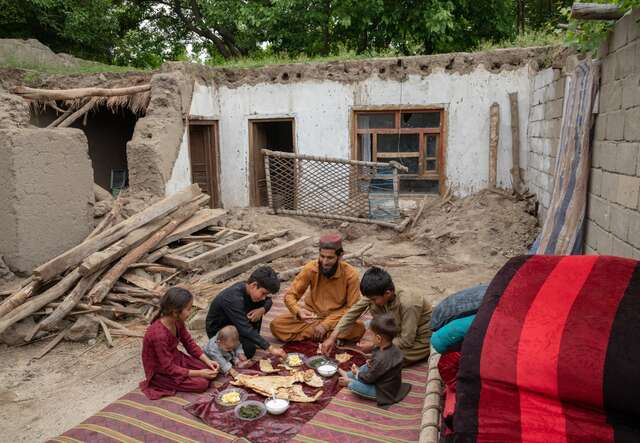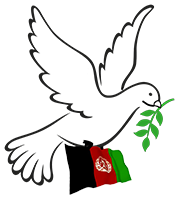International Rescue Committee
April 25, 2025
Families in Afghanistan continue to face food insecurity, disease and ongoing instability. For 23 million Afghans, U.S. aid funding has been a critical lifeline—but that support is now in jeopardy. Funding cuts are already having devastating impacts on the country’s most vulnerable communities, especially women and children.
Since the 1980s, the International Rescue Committee (IRC) has been delivering critical assistance to Afghans. Today, these programs—and the hope they provide—are at risk.
Due to cuts in U.S. aid funding, the IRC has been forced to suspend some of our life-saving services in Afghanistan. We remain committed to supporting the people of Afghanistan—but we need your support. Meet the Afghans whose lives have been transformed by IRC programs and find out how you can make a difference.
Crisis in Afghanistan: What are people facing?
Afghanistan is facing a severe humanitarian crisis, with over 22.9 million people in urgent need of aid. Decades of conflict, a prolonged economic crisis, and environmental disasters have pushed millions into poverty and left more than one in three Afghans food insecure.
The situation is especially dire for vulnerable groups, including over 3 million children and 1.2 million pregnant or nursing mothers suffering from acute malnutrition.
Restrictions on women’s access to work have left many women-led households without an income, increasing their risk of hunger and malnutrition. At the same time, girls are barred from attending school past sixth grade, depriving them of education and future opportunities.
How are U.S. aid cuts impacting Afghanistan?
For years, U.S. funding has provided a lifeline for millions of Afghans facing ongoing crisis.
However, recent aid cuts have forced the IRC to suspend critical programs that provide health care, vaccination, malnutrition treatment, clean water and protection services. As a result, over 700,000 people, including refugees and displaced families, will lose access to essential humanitarian services from IRC programming alone. Life-saving treatment for more than 15,000 young children suffering from malnutrition has been disrupted.
Across the country, more than 14 million people have limited or no access to health care. Communities are losing access to clean drinking water and basic sanitation services, creating a higher risk of disease outbreaks that could potentially spread across international borders. At the same time, vital programs that provided income and support for families are coming to a standstill, leaving many without the resources they need to survive.
Without renewed funding, countless families risk falling deeper into hunger, illness and poverty. Urgent support is needed to help the people of Afghanistan survive, recover and rebuild their lives.
The impact of humanitarian aid in Afghanistan
Humanitarian aid saves lives. In Afghanistan, it’s a lifeline providing health care, education and stability. These are the real stories of IRC clients and staff in Afghanistan:
Delivering medical care to the Ali family in rural Afghanistan
In a remote village of Afghanistan’s Bamiyan province, Muhammad and Hawa Ali raise their children amidst drought and food shortages.
When their children, Mahnaz and Murtaza, became sick, the family couldn’t afford to travel to the nearest hospital for treatment. “We cannot take the one who is sick anywhere for treatment because we can’t afford to pay the car fare,” explains Muhammad.
The IRC’s mobile medical teams arrived just in time. These teams travel across Afghanistan, delivering essential healthcare to families who would otherwise have no access to medical services. Once a month, they visit the Ali family’s village, offering life saving medicine for the children and treating Muhammad’s injured leg.
“I had pain in my leg, so I visited the doctor. My child was sick, she was coughing a lot, they gave us medicine… It is very good for us that the doctors come here and give medicine for the children.”
Muhammad dreams of a better life for his children: “I hope that they get educated in order to have a prosperous future.”
U.S. funding cuts have already forced several IRC mobile medical teams to shut down—leaving thousands of families like the Alis without accessible health care. Your donation can help keep these services running.
Restrictions on women and girls in Afghanistan are taking a devastating toll on families and the country’s future. In areas without schools, the IRC ran community based education programs until cuts to U.S. funding forced their closure in February 2025, leaving nearly 300,000 children without access to education. These programs were equipped with IRC teachers, learning materials, psychosocial support services and basic water sanitation and hygiene (WASH) supplies to sustain children’s education and well-being.
Teachers like Mursal and Hajera were two of the 120,000 IRC teachers that worked tirelessly to create a better future for all Afghan children.
At just 19 years old, Mursal dedicated six days a week to teaching Pashto, Dari and math. Beyond the classroom, she visited families to inspire them to send their daughters to school, emphasizing that education is the key to a brighter future. “All human beings must get an education,” she says, “Especially young girls. They must educate themselves and teach illiterate women and girls.”
Hajera hosted classes in her home in the rural Logar province. With her education cut short at grade 10, she remains deeply committed to creating opportunities for other girls that she never had herself.
“When my students study and work hard, it makes me hopeful about their future,” she says. “When they call me ‘teacher,’ it makes me proud.”
Teachers like Hajera and Mursal were the heart of community education in Afghanistan. Until aid cuts shuttered these programs, their unwavering determination paved the way for Afghan girls to keep learning, growing and dreaming of a brighter future.
Mursal and Hajera are eager to teach again. But without renewed funding, thousands of girls are left no access to learning opportunities. Now is the time to stand up for Afghan children.
Helping Azim rebuild after an intense flood
When flash floods devastated Afghanistan’s Laghman Province in spring 2024, Azim and his family lost everything. Days of relentless rain caused their home to collapse, reducing their belongings to nothing and leaving them without shelter, food or access to clean water. “Everything we owned was buried under the mud and rubble. I was lost, I didn’t know what to do next,” recounts Azim.
With eight children depending on him, Azim was overwhelmed, forced to sleep with his family among the ruins of their home, exposed to the elements and facing an uncertain future.
Azim met with IRC staff shortly after the disaster. Our staff assessed the family’s situation, verified their urgent needs and quickly enrolled them in IRC’s emergency cash assistance program—a flexible and cost-effective form of humanitarian aid. With this support, Azim purchased basic necessities like food, clothing and hygiene items, allowing him to provide for his family with dignity and autonomy.
Reflecting on the disaster’s impact, Azim shares, “The world needs to come together and to help people struck by tragedy. We need to help each other through this crisis.”
Like thousands of Afghans reeling from economic collapse, displacement and climate disasters, Azim is working tirelessly to rebuild. But needs remain immense.
Current U.S. funding cuts have already ended cash assistance and protection services for thousands of Afghans. Sustained funding is needed to maintain support for families like Azim’s.

How can I help the people of Afghanistan?
As U.S. humanitarian aid funding is cut, families across Afghanistan are being pushed deeper into crisis. But with your support, we can continue to provide lifesaving assistance to the communities that need it most.
Your donation empowers the IRC’s lifesaving work, from delivering medical services, cash assistance, education programs and so much more. Sustained funding is essential to helping families survive, recover and rebuild their lives.
We consistently earn top marks by charity watchdog groups for our efficient use of donor contributions and the effectiveness of our work.
 Afghanistan Peace Campaign
Afghanistan Peace Campaign